Death
Richard Sala, RIP
I loved the comics made by Richard Sala, a truly unique talent. As one of my Facebook pals, he was always funny, kind and clever. Alas, he's gone now.Here a rare bit of animation from him--INVISIBLE HANDS, the first bit--one of his first big breaks leading to a wonderful career, cut short.
Posted By: Paul - Mon May 11, 2020 -
Comments (0)
Category: Death, Comics, Books, Cartoons, 1990s, Fictional Monsters
An Artificial Sun
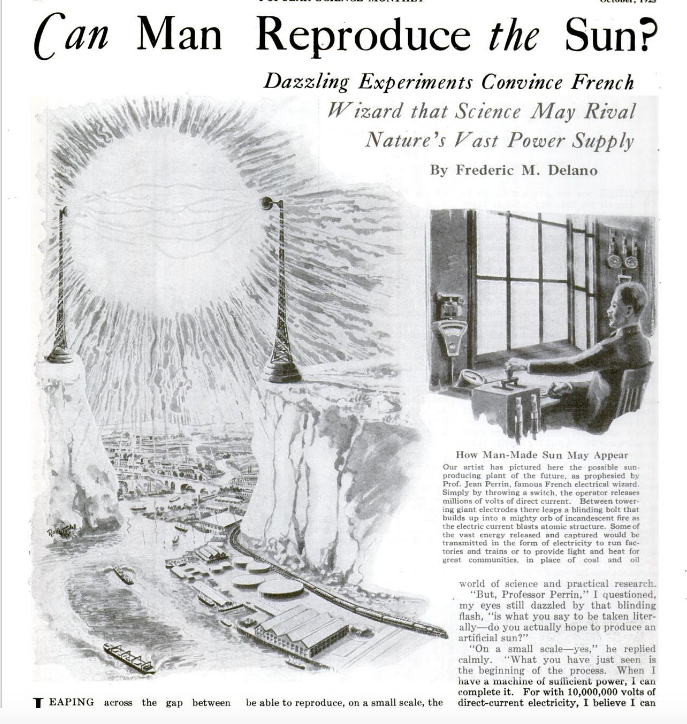
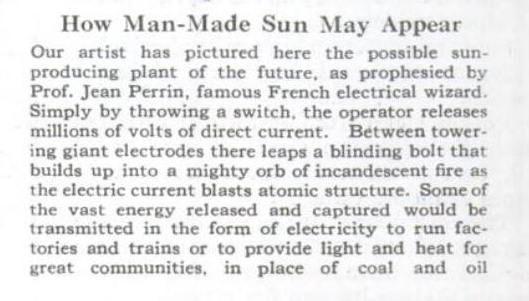
Read the whole piece here.
Posted By: Paul - Thu Apr 30, 2020 -
Comments (2)
Category: Armageddon and Apocalypses, Death, Destruction, Disasters, Technology, Crackpots, 1920s
Left-Foot Accelerator
Deadly crashes guaranteed, or your money back!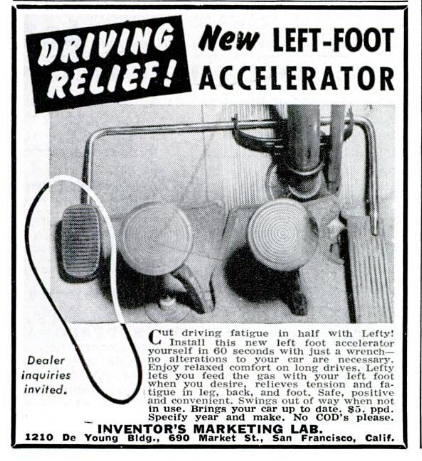
Source.
Posted By: Paul - Wed Apr 22, 2020 -
Comments (1)
Category: Death, Inventions, 1950s, Cars
Follies of the Madmen #472
That mouse is definitely giving the finger. Is it supposed to be a sexy lure for male mice to entice them into the trap? I'm confused....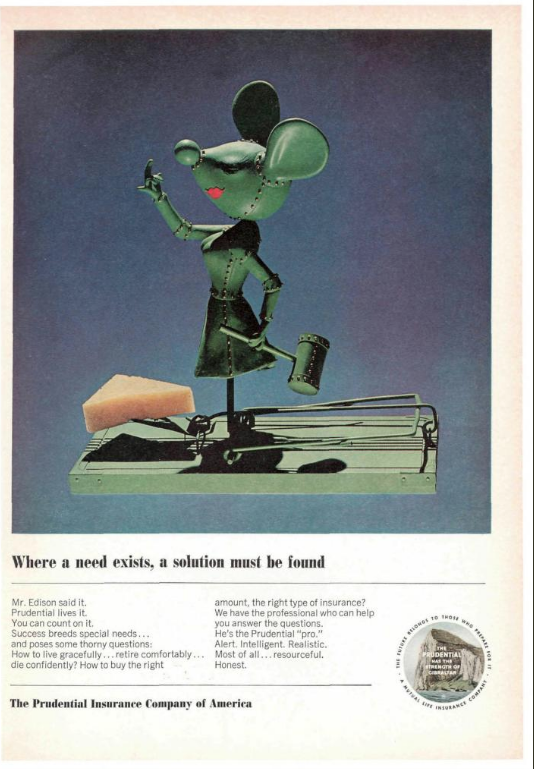
Source.
Posted By: Paul - Fri Apr 10, 2020 -
Comments (8)
Category: Animals, Anthropomorphism, Antisocial Activities, Business, Advertising, Death, 1960s
His Wife’s Arm
An unusual tombstone in a Newport, Rhode Island cemetery, placed by Mr. William Tripp, commemorates his daughter, Wait, who died April 24, 1780, aged 10 months 10 days. Also, his son William who died March 7th, 1784, aged 22 months. And “Also his wife’s arm amputated Feby 20th 1786.”The amputated arm is depicted in a carving placed in the middle of the tombstone.

Source: Special Bulletin of the Newport Historical Society - Dec 1913
Posted By: Alex - Tue Apr 07, 2020 -
Comments (2)
Category: Death, Dismemberment
Just Can’t Put My Finger On It
Who knew this was a technique? See a more recent incident after the first story.DOCTOR MAKES A DRAMATIC RESCUE
Karen Dillon
CHICAGO TRIBUNE
Dr. Wendy Marshall was jolted awake at 5 a.m. by an urgent phone message: Doctors at a Joliet hospital were using nothing but their fingers to plug two bullet holes in a man`s heart in a last-ditch effort to save his life.
The doctors at Silver Cross Hospital ''said they had their fingers in the holes and couldn`t stop the bleeding,'' Marshall recounted Thursday.
In an age when sophisticated medical equipment can keep patients alive for months, this most basic technique ultimately saved the life of Tommy Lee
''Tony'' Hairston, of Joliet.
Before the night was over, Marshall, a cardiac surgeon and director of the Loyola University Medical Center`s Trauma Center and the Air Medical Service, would be flown to Joliet and use her own fingers to dike the holes. At the same time, Marshall squeezed the 29-year-old man`s heart to force it to pump when it stopped three times for a total of eight minutes.
Eventually, Hairston was taken by helicopter to Loyola where open heart surgery was performed. Thursday night he was listed in critical condition, but was expected to recover.
The drama began Wednesday night when Hairston, a landscaper shot after an argument with a neighbor over missing property, was taken to Silver Cross Hospital in Joliet.
Silver Cross physicians immediately operated on Hairston, but did not open up the victim`s heart. ''The surgeon found blood in the chest and a couple holes around the heart. At that time, he didn`t open up the heart,''
said Dr. Robert Freeark, chief of surgery at Loyola.
But then after surgery, Hairston started bleeding again. ''This time the surgeon opened Hairston up and and found two holes in his heart . . . and he couldn`t stop the bleeding,'' Freeark said.
The physicians did the only thing they could-stick their fingers into the holes in Hairston`s heart.
Marshall arose, dressed and was taken by helicopter to Silver Cross, accompanied by a paramedic, Kent Adams, and Laurie Dudek, a flight nurse. They arrived 23 minutes after the call.
At Silver Cross, Marshall found a hole in the front of the heart and one in the back. The location of the one in the back was in an area where it couldn`t be repaired without stopping the heart, she said, and Silver Cross didn`t have the equipment for such specialized treatment.
So it meant transporting Hairston to Loyola Medical Center-with Marshall`s fingers in the holes.
Before the night was over, Marshall, as her fingers plugged the holes, squeezed Hairston`s heart to force it to pump when it stopped three times for a total of eight minutes.
Marshall said she used the first two fingers of her right hand to plug the back hole and her right thumb to stop up the front hole. ''When the heart stopped, I kept my fingers in the holes and squeezed my left hand against the right.''
During the flight, Adams, the paramedic, forced Hairston to breathe by squeezing a bag attached to a tube that was shoved down his trachea.
Four intravenous tubes were attached to Hairston, feeding medicine to stimulate his heart beat-one into a large vein near his left collar bone, two to his left arm and one in his right arm.
When the team finally arrived at Loyola, cardiac surgeon Henry Sullivan had been alerted. The patient was placed on a machine that circulated his blood while the heartbeat was halted and the organ repaired, Freeark said.
Adams shook his head in wonder Thursday afternoon. ''It was dramatic,''
he said.
Adams said Marshall was steady as a rock during the flight. ''She was so calm. She just let us know what was happening, and then we did our part.''
Hairston allegedly was shot by Robert Knox, of Joliet, after an argument over some items reported missing from Hairston`s apartment, Joliet police said. Knox was charged with attempted murder, armed violence and unlawful use of a weapon, police said.
By Thursday afternoon, Hairston had awakened a few times, which is considered a positive sign, Marshall said.
Hairston ''is lucky to be alive today,'' she said. ''When the heart stops, most people are basically brain dead within three to four minutes.''
Freeark and another Loyola heart physician, Dr. Bruce Lewis, said that saving Hairston`s life by plugging the holes in his heart was amazing.
''To my knowlege it was totally unprecedented,'' Freeark said. ''Nobody has ever been transferred with a finger better.''
''Very, very amazing, and very rare to see someone survive after that . . . especially with the size of the hole (in the back of the heart),'' Lewis said.
Marshall took the praise in stride. ''Anyone who has got a blood pressure can be saved. So you go for it.''
Source.
Heroic military veterans and police officers put their training to use during the deadly mass shooting at a Las Vegas music concert — even “plugging bullet holes with their fingers,” according to a report.
“You saw a lot of ex-military just jump into gear,” witness Russell Bleck told the “Today” show on NBC. “I saw guys plugging bullet holes with their fingers.”
“While everyone else was crouching, police officers (were) standing up at targets, just trying to direct people, tell them where to go,” he added. “The amount of bravery I saw there, words can’t describe what it was like.”
The practice of plugging gunshot wounds helps to kick in the body’s defense mechanisms that prevent rapid blood loss, according to a Wired report.
Severe wounds, especially on the carotid arteries of the neck, must be quickly plugged with the fingers or packed to temporarily stop the hemorrhaging, according to Gould and Pyle’s Pocket Cyclopedia of Medicine and Surgery.
Source.
Posted By: Paul - Mon Mar 09, 2020 -
Comments (2)
Category: Body, Blood, Death, Guns, Medicine, Superheroes, 1980s, Twenty-first Century
Exploding Pacemakers
In the late 1970s, crematoriums began to report that, on occasion, bodies would violently explode while being burned, often causing structural damage. The problem was soon traced to pacemakers that were turning corpses into bombs. Awareness of the problem has lessened the frequency of the explosions, but they do still occur.An article in the Journal of the Royal Society of Medicine (July 2002) offers some background info:
Though these explosions are infrequent, in some crematoria there is more than one explosion per year. Pacemaker explosions can damage the cremator, breaking doors or brickwork. The noise of an explosion may cause distress. Sometimes, pacemaker remains are found. Injury to staff is fortunately rare.
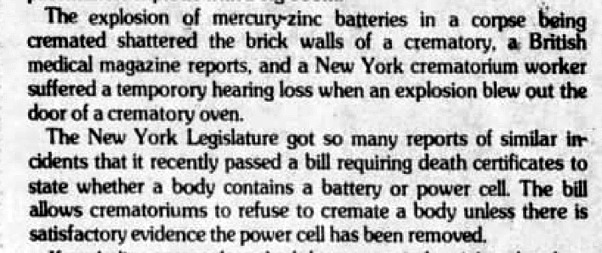
McLean County News - July 23, 1981
Posted By: Alex - Wed Mar 04, 2020 -
Comments (3)
Category: Death, Explosives
Pressure Cooker Catastrophes
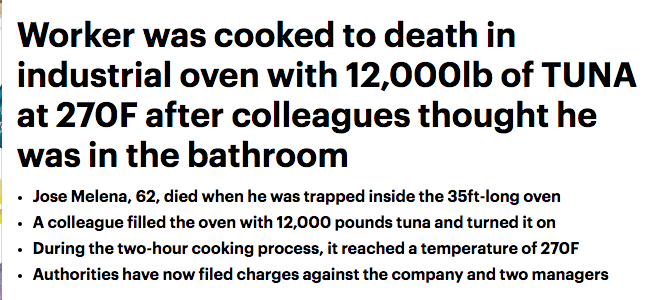
Source.
Many other gruesome incidents here.
Posted By: Paul - Wed Mar 04, 2020 -
Comments (2)
Category: Accidents, Death, Domestic, Appliances
Hamlet, the Rock Musical
Posted By: Paul - Tue Mar 03, 2020 -
Comments (0)
Category: Beauty, Ugliness and Other Aesthetic Issues, Costumes and Masks, Death, Ineptness, Crudity, Talentlessness, Kitsch, and Bad Art, Pranks and Revenge, Theater and Stage, Homages, Pastiches, Tributes and Borrowings, Pop Art, Foreign Customs, Seventeenth Century, Sixteenth Century, Brain Damage, Cacophony, Dissonance, White Noise and Other Sonic Assaults
Linda Lawson, Miss Cue
From her Wikipedia page:On May 5, 1955, Lawson was dubbed "Miss Cue"[4][5] in reference to a series of nuclear tests conducted by the US military under "Operation Teapot," and publicized as "Operation Cue" in a short film distributed by the US Federal Civil Defense Administration. [6]
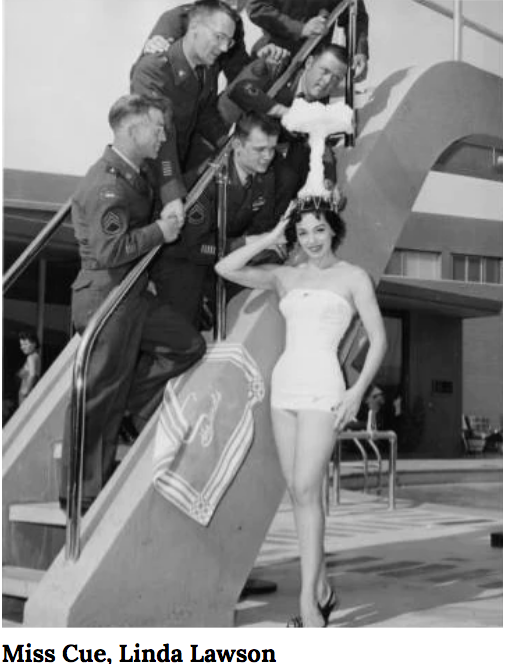
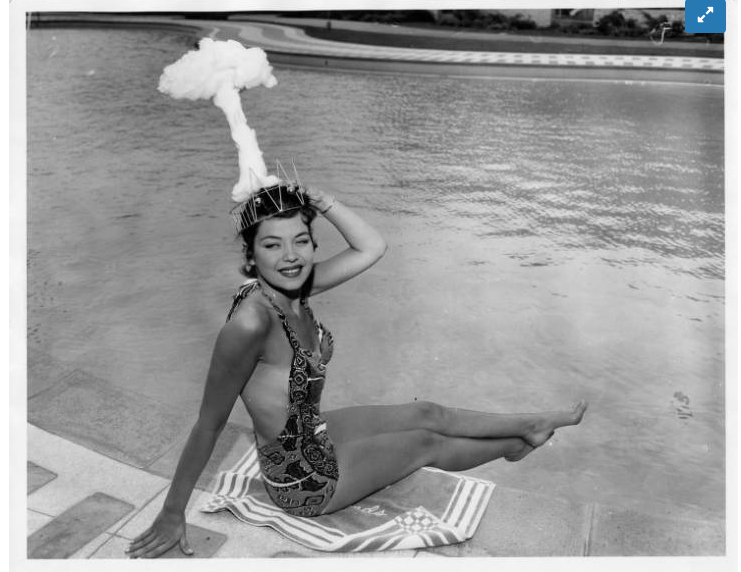
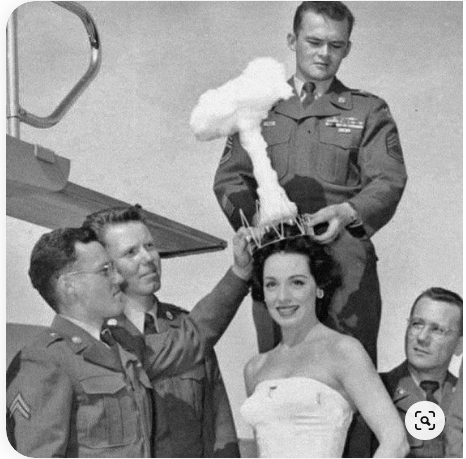
Posted By: Paul - Sun Feb 16, 2020 -
Comments (3)
Category: Death, Government, Corporate Mascots, Icons and Spokesbeings, Atomic Power and Other Nuclear Matters, 1950s

| Who We Are |
|---|
| Alex Boese Alex is the creator and curator of the Museum of Hoaxes. He's also the author of various weird, non-fiction, science-themed books such as Elephants on Acid and Psychedelic Apes. Paul Di Filippo Paul has been paid to put weird ideas into fictional form for over thirty years, in his career as a noted science fiction writer. He has recently begun blogging on many curious topics with three fellow writers at The Inferior 4+1. Contact Us |




